#Rimpa school
Explore tagged Tumblr posts
Text

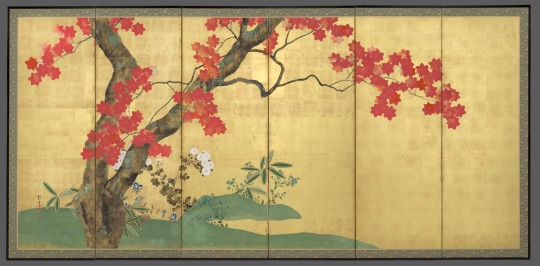
Sakai Hōitsu
Cherry and Maple Trees
early 1820s
#Sakai Hōitsu#rinpa#rinpa school#rimpa#rimpa school#japanese artist#japanese art#japanese painter#japanese painting#asian art#japanese landscape#maple tree#cherry tree#nature art#nature#nature painting#art history#aesthetictumblr#tumblraesthetic#tumblrpic#tumblrpictures#tumblr art#aesthetic#beauty
45 notes
·
View notes
Photo

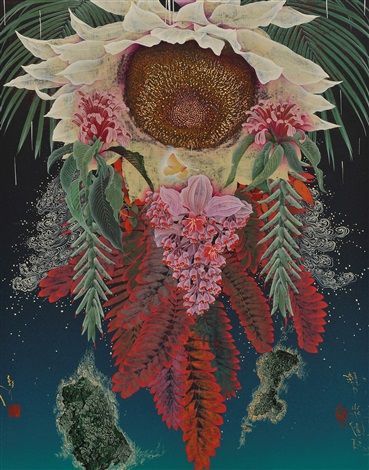
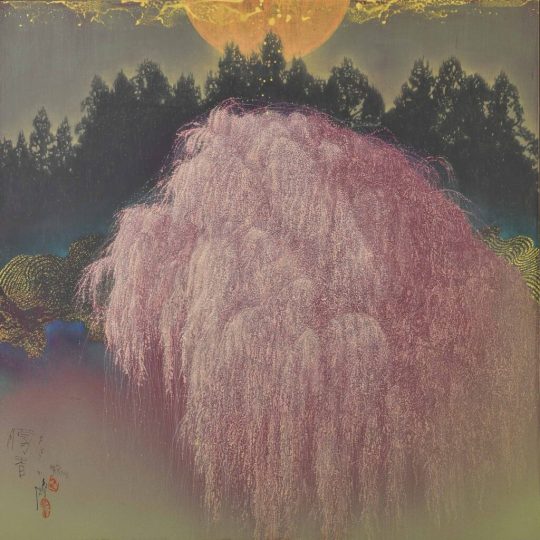
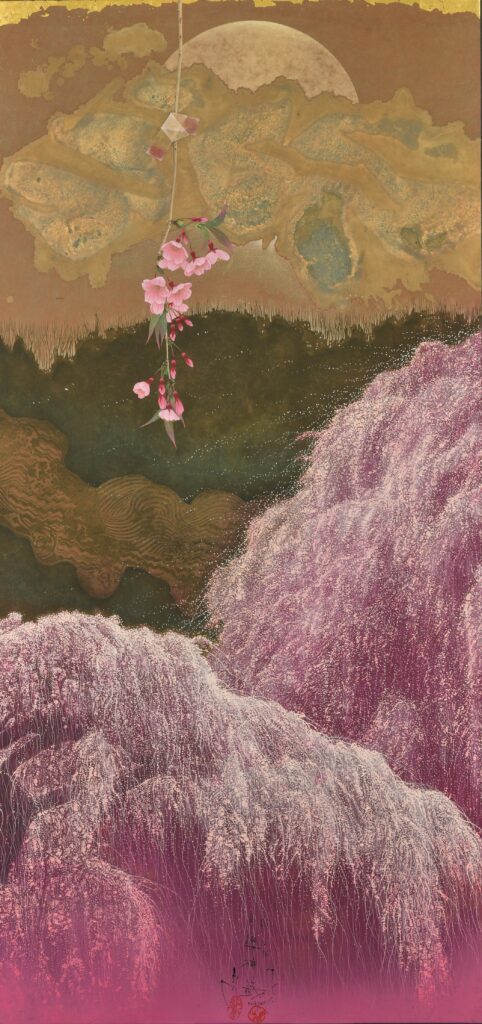
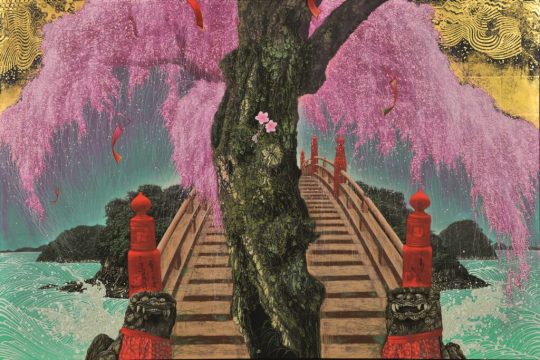
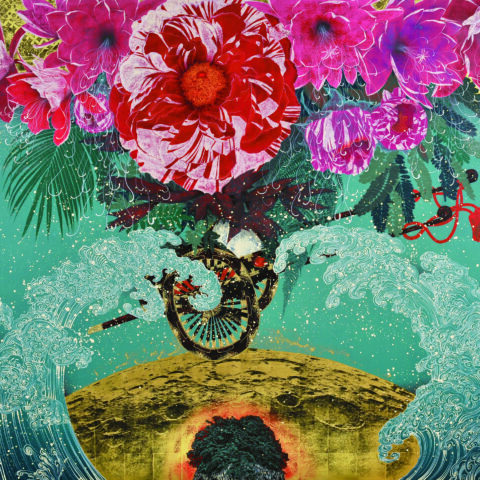
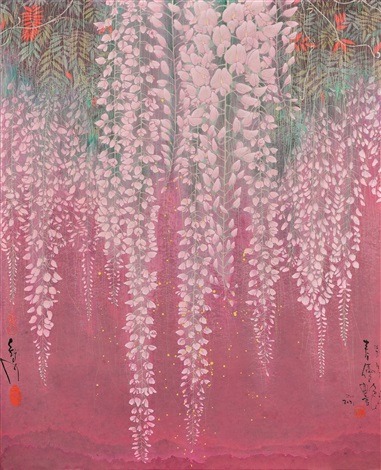
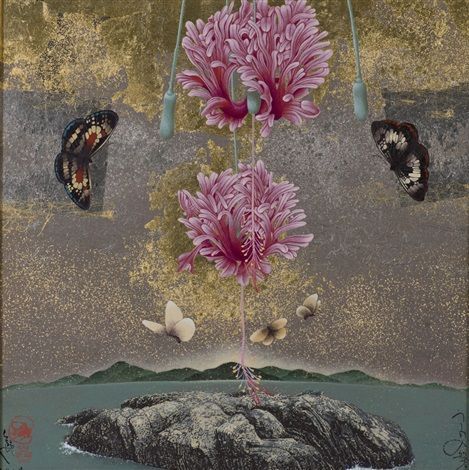
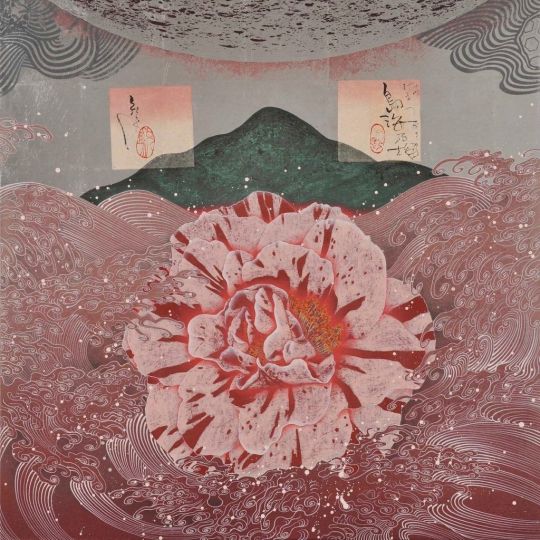

Born in Ehime Prefecture, Japan, 1948, Kyosuke Tchinai graduated from Tokyo University of the Arts with a post-graduate degree.
From the early 1980s, he established an innovative painting style that challenges the conventional notion of the Japanese painting, while also pioneering a unique method of applying acrylic paint onto traditional Japanese paper. Tchinai has also mastered the conventional European image-making technique of using cross-hatching to portray classical Japanese subjects such as the four seasons in fantastical settings. Furthermore, he has helped revive traditional Japanese aesthetics by assimilating elements of art from the Edo period (1603-1868).
For instance, his use of gold and platinum leaves to lavishly decorate his paintings was profoundly influenced by the Rimpa School of the 17th century.
https://www.artsy.net/artist/kyosuke-tchinai
44 notes
·
View notes
Text
Tapestry Design | Process

I added the yellow background to get the golden textures from the 'Rimpa School' art style of the ancient Japanese.

0 notes
Photo



byōbu-e 屏風絵 - Mario Bros, métamorphosé en deux divinités pour célébrer le 400e anniversaire de l'école de peinture Rimpa ha 琳派 (1). Les œuvres de l'école Rimpa se caractérisent par l'utilisation adroite des couleurs flamboyantes et de la peinture dorée.
L'œuvre, réalisée selon la technique de l'école Rimpa, a été créée par l'artiste
Yamamoto Tarō 山本太郎 (1974 - ),
qui s’est inspiré du “Fujin Raijin-zu Byobu” (Le paravent du dieu du vent et dieu du tonnerre), peint par Tawaraya Sotatsu 俵屋宗達 , l'un des fondateurs de l'école Rimpa.
Le paravent de Yamamoto représente Mario, le personnage principal du “Super Mario Bros”. franchise de jeu vidéo, et son frère, Luigi, en tant que Raijin (dieu du tonnerre) et Fujin (dieu du vent), respectivement, sur un fond d'or.
(1) une des principales écoles historiques de Peinture japonaise créée, au 17ème siècle à Kyōto 京都, par Hon'ami Koetsu 本阿弥光悦 et Tawaraya Sōtatsu 俵屋宗達 - Environ cinquante ans plus tard, le style a été consolidée par les frères Ogata Korin 尾形光琳 et Ogata Kenzan 尾形乾山
Source : https://www.japanbullet.com/news/mario-bros-morph-into-deities-to-celebrate-400th-anniversary-of-rimpa-painting-school
#yamamoto taro#taro yamamoto#painter#screen#mario bros#rimpa school#japan#peintre#painting#peinture#paravent#école rimpa#japon#byobue
80 notes
·
View notes
Photo
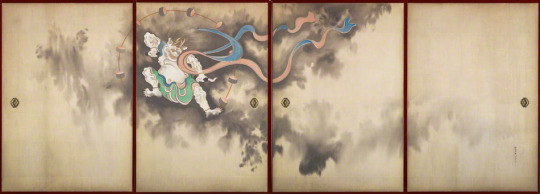
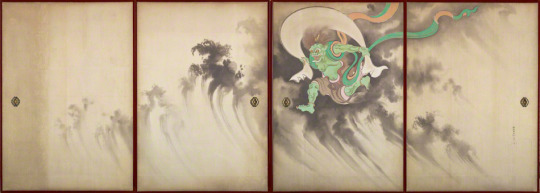
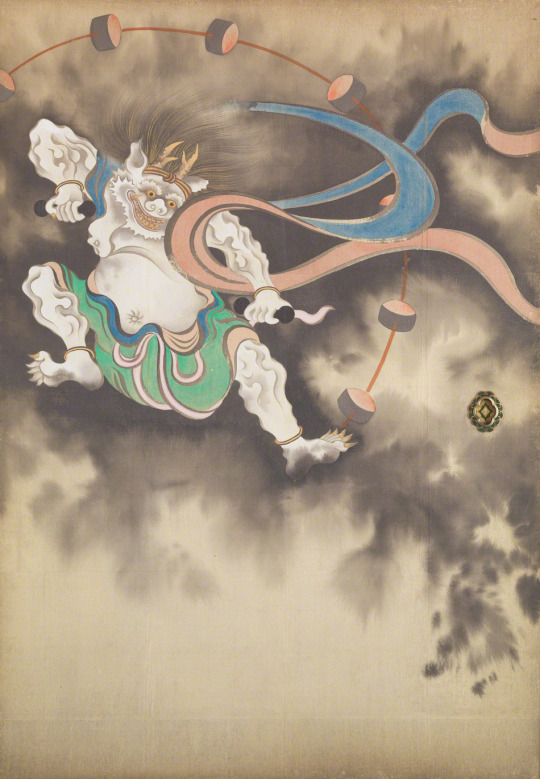
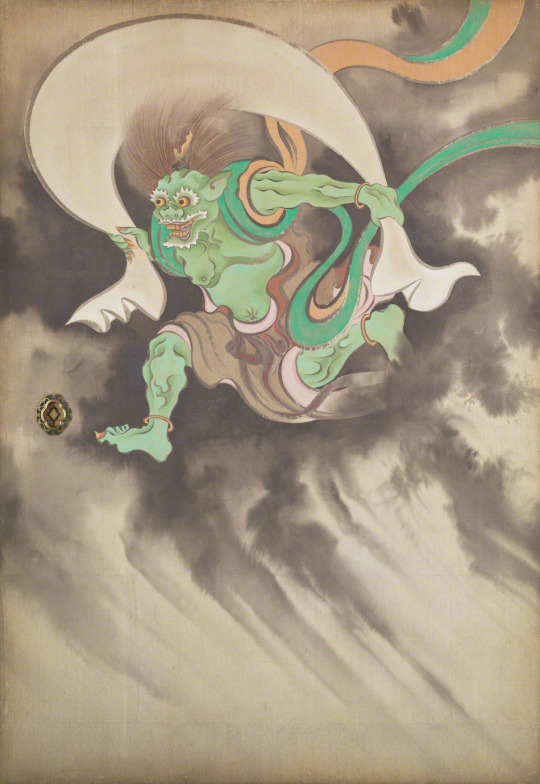
Suzuki Kiitsu
Wind God and Thunder God. 1930-40
#suzuki kiitsu#painting#decorative objects#mythology#shinto#edo rimpa school#japanese artist#tokyo fuji art museum#art on silk#byōbu folding screens#reinterpretation
41 notes
·
View notes
Text

The 48th Kaga-Yuzen New Work Competition
Furisode (long-sleeved kimono) "Hanaranman" by Miki Fujita
With vivid peonies and chrysanthemums blooming in the waves of the Rimpa school, the more dynamic peonies were used to create the impression of a young day in vivid colors.
73 notes
·
View notes
Photo

Pheasant and Grasses, Ogata Korin, late 17th-early 18th century, Cleveland Museum of Art: Japanese Art
Korin was a founder of the Rimpa (decorative) school of painting and was a keen observer of nature. The pheasant is often associated with autumn. Size: Overall: 134.6 x 43.5 cm (53 x 17 1/8 in.); Painting only: 61.3 x 36.8 cm (24 1/8 x 14 1/2 in.) Medium: hanging scroll; ink and color on paper
https://clevelandart.org/art/1985.266
149 notes
·
View notes
Photo

'Autumn Landscape with Colourful Maple Trees' (渓雨紅樹), ca. 1950s, by Kawai Gyokudō (川合 玉堂; 1873-1957) of the Rimpa school. Present lcoation: Yamatane Museum of Art, Shibuya-ku, Tokyo, Japan.
16 notes
·
View notes
Photo

Newly built spacious three bedrooms Bungalow for rent in Ongata Rongai, Rimpa area it is a 3 bedroom bungalow 2 ensuite. its just 600m off the tarmac. Each house has its own gate and compound. It has very spacious rooms. All the bedrooms have wardrobes. Good schools both public and private within. Have the highest standards of finishing. Parking lot for more than 3 cars. Price 40,000 per month. #housetoletkenya #rongaifinest #bungalows (at Ngong Town) https://www.instagram.com/p/ClhKOfVoTPe/?igshid=NGJjMDIxMWI=
0 notes
Text
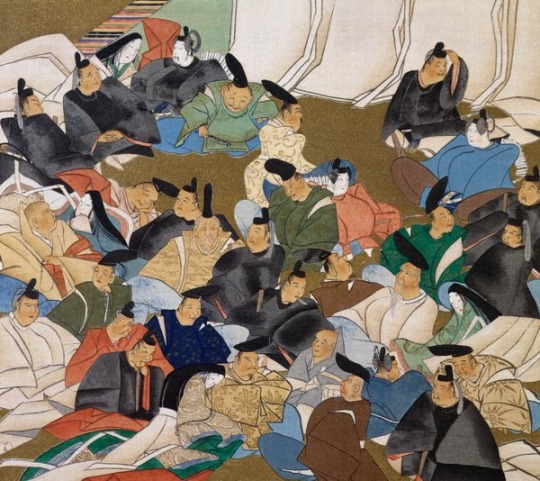
Ogata Korin
36 poets
Edo period
#ogata korin#japanese art#japanese artist#japanese painter#japanese painting#asian art#rinpa#rinpa school#rimpa#rimpa school#poets#poetry#japanese poetry#art on tumblr#portrait#group portrait#art history#aesthetictumblr#tumblraesthetic#tumblrpic#tumblrpictures#tumblr art#aesthetic#beauty
35 notes
·
View notes
Text
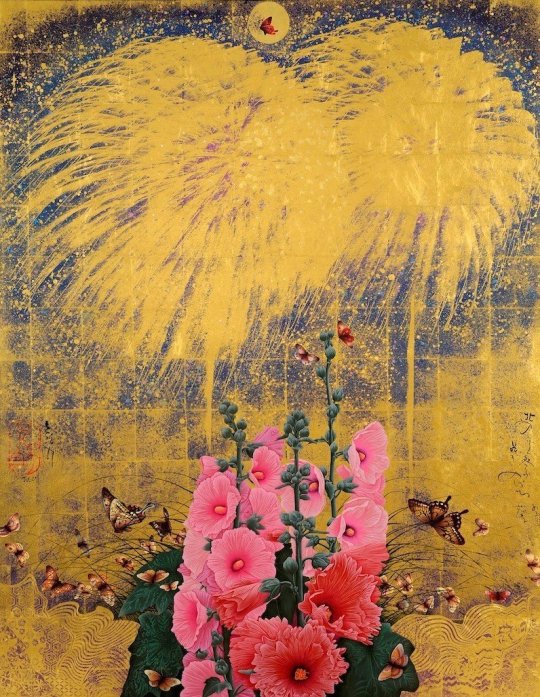
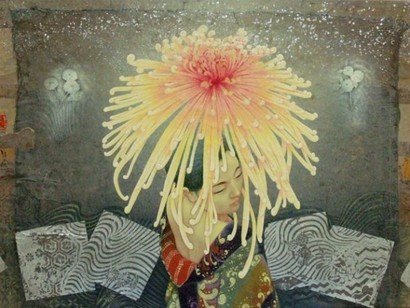
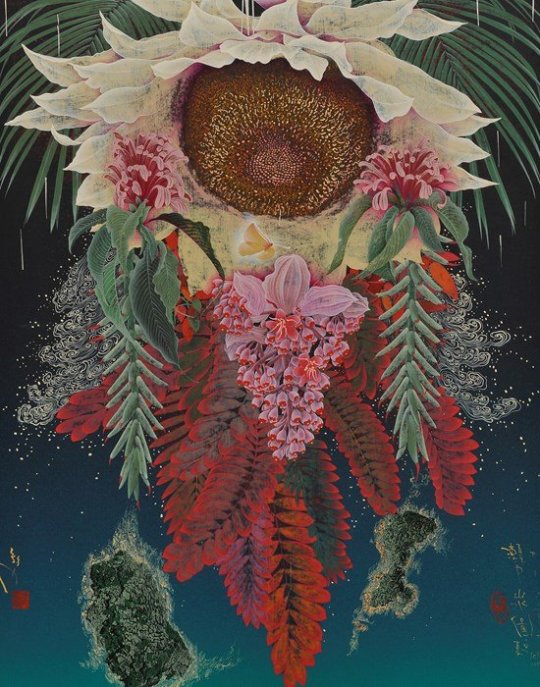

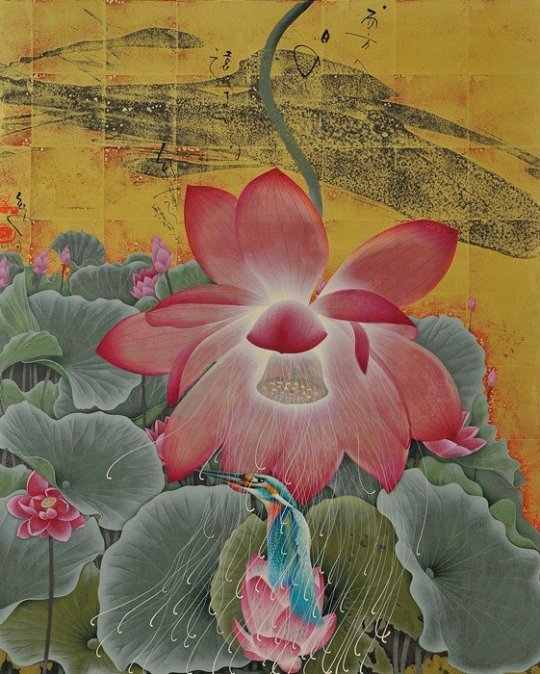
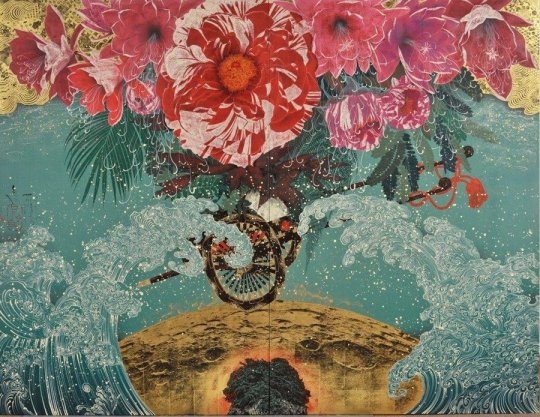
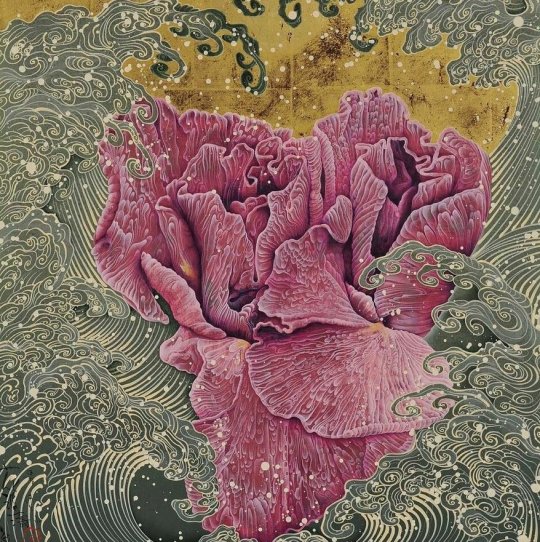
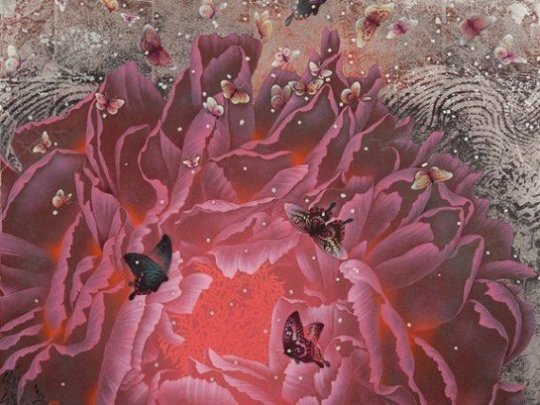

Born in Ehime Prefecture, Japan, 1948, Kyosuke Tchinai graduated from Tokyo University of the Arts.
Since the early 1980s, Tchinai has established an innovative painting style which challenges the conventional notion of the Japanese painting. Tchinai pioneered the method of applying the recently developed Western painting material of acrylic paint onto the traditional Japanese supporting medium washi (Japanese paper). Tchinai also uses the European image-making technique of cross-hatching to portray classical Japanese subjects, such as the four seasons in fantastical settings.
Tchinai revives traditional Japanese aesthetics by assimilating elements of the art from the Edo period (1603-1868) into his artwork. For instance, Tchinai’s use of gold and platinum leaves to lavishly decorate his paintings was influenced by the Rimpa School of the seventeenth century.
28 notes
·
View notes
Text
Tapestry Design | Ideation + Research
chrysanthemum
The chrysanthemum, or kiku, is a Japanese symbol that represents longevity and rejuvenation.


The Japanese word kiku translates to "chrysanthemum". The flower's name comes from the Greek words chrysos (gold) and anthos (flower).
The Japanese introduced the chrysanthemum from China in about the 8th century as medicine. They were so fond of the flower that they adopted it as the emperor's crest and official seal. Every year, Japan has a National Chrysanthemum Day, also known as the Festival of Happiness.
The ancient Japanese have also used this flower across many tapestries that they've made and as a result, have also developed their own unique art style connected to Chrysanthemums. This art style on the tapestries was called "The Rimpa School" and it uses gold leaf backgrounds, gold flake clouds, and beautifully draped chrysanthemums. In Chinese culture, they are offered to elders as a symbol of longevity and good luck.


Since Chrysanthemums have a rich history of being a symbol of longevity, I decided to use these flowers as the main visual of the tapestry, and I will also try to incorporate hints of the 'The Rimpa School' style into the tapestry design.
0 notes
Photo


byōbu-e 屏風絵 - “Pair Chrysanthemum Dew from the Sweet Valley” de l’école
Rimpa-ha 琳派
Une des principales écoles historiques de Peinture japonaise créée, au 17ème siècle à Kyōto 京都, par Hon'ami Kōetsu 本阿弥光悦 (1558 - 1637) et Tawaraya Sōtatsu 俵屋宗達 (? - ?).
Environ cinquante ans plus tard, le style a été consolidée par les frères Ogata Kōrin尾形光琳 (1658 - 1716) et Ogata Kenzan 尾形乾山 (1663 – 1743).
52 notes
·
View notes
Photo

Ogata Korin, Flowering Plants in Autumn Creator, Edo period (18th century), 1541 x 1730 cm, pair of bi-fold screens, Suntory Museum of Art, Tokyo.
“Flowering plants in autumn are a familiar and emotionally evocative theme, often used in Japanese literature and art. In this pair of screens, autumn-blooming plants, including chrysanthemums, pampas grasses, bush clover, bellflowers, and fringed pinks, vie in their beauty. While reproducing the vivid freshness of nature, this screen also shows the quest for bold abstraction and decorative qualities characteristic of Rimpa-school screens.”
0 notes
Photo

Sumie class. Student'work. 水墨画クラスから 生徒さん作品 こちらは、狩野山楽の虎の屏風絵から題材をとって、琳派の水墨画法になおしてお稽古したものです。 Text was picked up from Sanraku Kano(The founder of Kanou school)'s tiger painting on folding screen. Added essence and techniques from Rimpa art. 虎の目線の右上に、日頃、私が見たいと思っている何かが感じられます。左下方向に歩く虎の動きが、その何かの存在を際立たせるかのようです。 水墨画の面白みに溢れた一作です。 On the right corner where the tiger is looking up, we see something we've been looking for. The direction towards on the tiger is moving emphasis that something. Recalls something we can not tell from our mind. An admirable inkpainting work, this could be said. #2022 #水墨画 #狩野派 #Kanou #山楽 #Sanraku #rimpaart #rimpa #art #hoitsu #sumie #inkpainting #寅歳 #琳派アート #お正月 (Tokyo Japan) https://www.instagram.com/p/CWqTUzQptaI/?utm_medium=tumblr
0 notes
Photo

Poem-card from the Shinkokin wakashu (New Collection of Japanese Poems from Ancient and Modern Times) with Design of Pine on a Beach, Hon'ami Koetsu, 1606, Cleveland Museum of Art: Japanese Art
Tawaraya Sotatsu and Hon’ami Koetsu are both associated with the founding of the Rimpa school of Japanese painting. In this poem-card––one of 16 that survive––Tawaraya painted the gold and silver design, over which Hon’ami recorded poems from Shinkokin wakashu. The verses read from top to bottom and from right to left: "Even as I gaze, the thought of it is lonely. High in the heavens the moon-capital lies still in the sky of its dawning." Size: Overall: 132.1 x 43.2 cm (52 x 17 in.); Painting only: 20 x 17.4 cm (7 7/8 x 6 7/8 in.) Medium: card mounted on a hanging scroll; gold, silver, and ink on paper
https://clevelandart.org/art/1987.60
148 notes
·
View notes